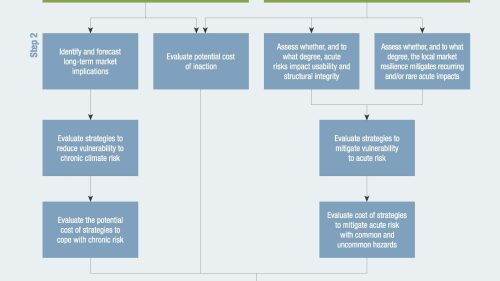“I get the question a lot: ‘Oh, mass timber—that’s a West Coast thing, right?’” said Jessica Scarlett, regional director for Woodworks, at the 2023 ULI Carolinas Meeting in February. “But it’s not just a West Coast trend anymore.”
Scarlett was discussing the growth in popularity of mass timber, a construction style that uses engineered wood panels to form a building’s structural system. While it originated in Europe in the 1990s, the method quickly spread throughout Canada and the Pacific Northwest, and mass timber has grown in popularity all over the United States.
One reason is its sustainability. Conventional building materials like concrete and steel account for 11 percent of greenhouse gas emissions globally. Meanwhile, mass timber—from the sustainably managed forests where the wood is grown to the end product which locks up carbon dioxide for its entire lifetime—has a much more favorable carbon footprint.
There are other positives, including mass timber construction’s unique aesthetic. “As architects, we like it because it’s beautiful,” said Danny Adams, principal and design leader at LS3P Associates. His firm has designed three office buildings for the Wilmington, North Carolina–based Live Oak Bank using glue-laminated timber, and recently broke ground on a fourth that will use cross-laminated timber, another popular mass timber material. The new building, like the other three, will utilize wood beams and ceilings as design elements, with cladding made from locally sourced cypress.
All of the buildings have spacious interiors full of natural light. That look, said Adams, has helped the bank with employee retention. “This is one example where good design equals good business,” he said.
But mass timber construction is still in its infancy. As of December 2022, fewer than 1,700 mass timber projects were in progress or have been completed nationwide. As a result, the pioneers who employ it—whether wholly or in hybrid developments—have had to contend with lean supply chains and a need to educate many of the subcontractors and building inspectors they work with.
“It’s a new way to build,” said Kevin Smith, operations manager in the Charlotte office of Swinerton, the national construction company. “But it comes with challenges, too. It really takes a different type of mindset to put teams together and figure it out.”
Developers can attest to some of those challenges. “In the network that we all rely on as developers—the lenders, investors, contractors, and subs—there’s a limited number of people participating in mass timber now,” said Harrison Tucker, CEO of the Charlotte-based development company Space Craft, which is building the first mid-rise hybrid mass timber apartment building in the Southeast.
His company chose mass timber in part to differentiate its product from the many other apartment buildings currently being constructed in Charlotte, but that has meant working with subcontractors and code officials who are unfamiliar with the building style. “That does impact costs,” he said. And building with cross-laminated timber panels, for example, requires much more up-front planning that ideally includes mechanical, electrical, and plumbing representatives very early in the process.
The supply chain for the United States is also nascent, particularly on the East Coast, and cross-laminated timber isn’t yet a commodity product like traditional lumber. While the Southeast has a robust timber belt, getting mills, manufacturers, and fabricators up to speed in the region won’t happen overnight.
“It takes time to build a supply system,” said Graham Montgomery, technical director at Timberlab, a branch of Swinerton that provides wraparound services for developers using mass timber. As a result, the wood may not be local at this point, said Montgomery. “In 10 years maybe we can be a little more picky.” And in 10 years, with more suppliers and more demand, costs will likely be lower.
But those who are dipping their toes in mass timber now think that creating unique, attractive buildings is worth the potential headaches or increased cost. “You think about these mill buildings from around 1900—they’re some of the best buildings we have in the Southeast,” said Tucker. “I think we’re creating a new stock of that.”





